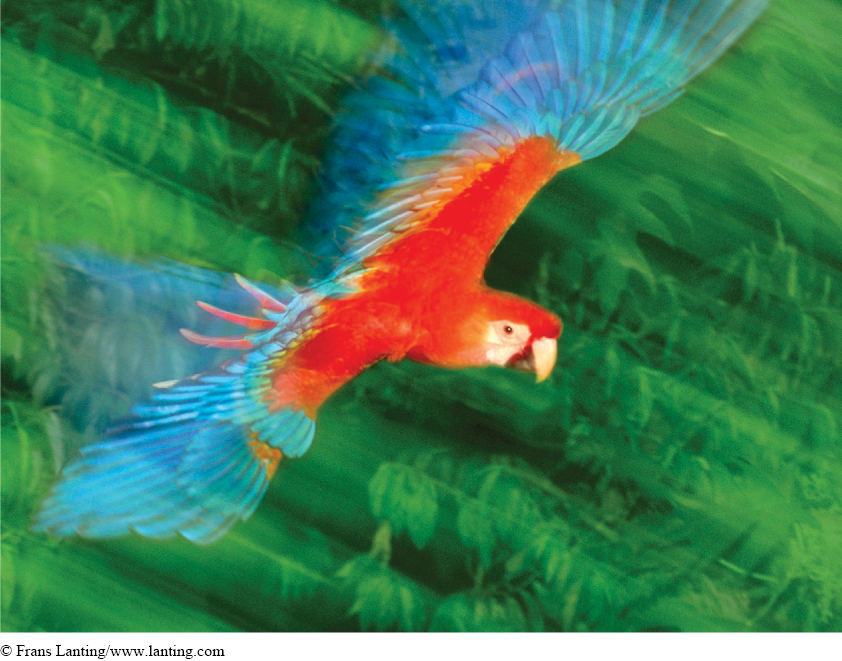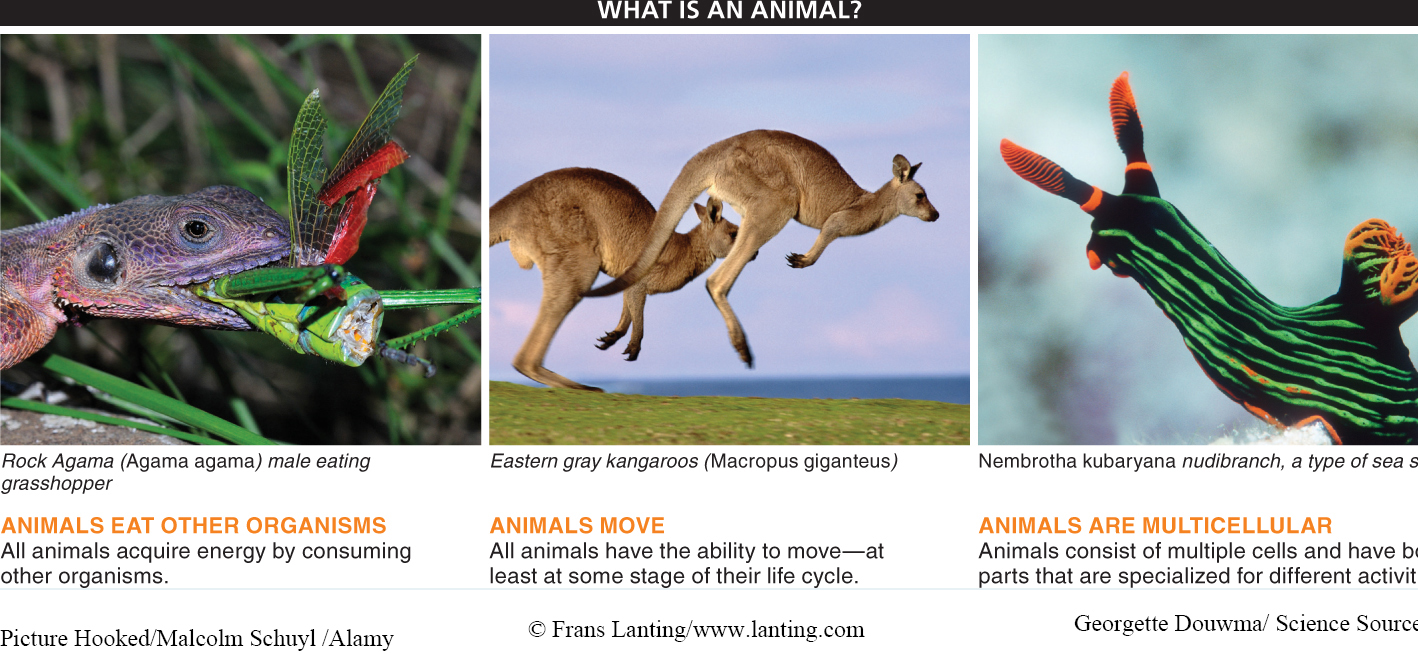11.1–11.3: Animals are just one branch of the Eukarya domain.

Looking at a kangaroo, it’s obvious that it is an animal. The same goes for a mosquito, squid, or earthworm. It gets a bit more difficult, though, when you look at a sponge. Is it an animal? Or is it a plant? Or is it something else? This is when it is helpful to have some guidelines for identifying and organizing the biodiversity we can see on earth.
For the sponge, the answer is that it is classified as an animal. Here’s why. When defining what is or is not an animal, we look for certain features that are common to all animals. Surprisingly, considering the enormous differences among even the few animals mentioned above, just three characteristics are generally sufficient to define animals (FIGURE 11-1).

- 1. All animals eat other organisms. That is, rather than manufacturing their own food, as plants and some bacteria do through photosynthesis, animals consume plants, bacteria, other animals, fungi, or some combination of these. And because the best way to catch other organisms is to move toward them or chase after them, that brings us to the second characteristic that sets animals apart from plants.
- 2. All animals move—
at least, at some stage of their life cycle. That qualifying phrase is important because some animals move only during a period called the “larval stage” that comes early in their lives, and when they become adults they fasten themselves to a surface and stay there. If you visit a rocky seashore, you can find two of these animals— mussels and barnacles— living on rocks in the tidal zone. Organisms that are fastened in place, such as adult mussels and barnacles, are said to be sessile, but even animals that are sessile as adults moved when they were larvae. - 3. All animals are multicellular, and they generally have body parts that are specialized for different activities. For example, most animals possess sensory organs (eyes, ears, nose, tongue, antennae, whiskers, and so on) that enable them to acquire information about their environment and, among other things, detect potential prey and predators.
447
There are a few other general features of animals—
TAKE-HOME MESSAGE 11.1
Animals are organisms that share three characteristics: all of them eat other organisms, all can move during at least one stage of their development, and all are multicellular.
A sponge is a multicellular organism without specialized tissues or organs. The sponge gets its energy by consuming bacteria and algal cells and remains stationary as an adult (although sponge larvae swim freely). Based on this information, can you tell if sponges are animals? Why or why not?